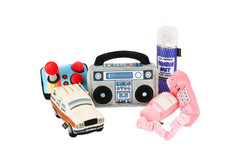You are what you eat, and that means your pet is what they eat. While you don't go to as much trouble preparing your pet's food as you do your own, you should still take a little time to study pet food labels. That way, you can have a better idea of what you're putting in their bowl.
Be Sure It's the Right Food
When scanning over any pet food label, you should notice several things being displayed prominently. You should see the product name, the pets’ species and life stage the food is intended for, and the weight or net quantity. These should all be on the principal display panel on the front of the package.
Read the Information Panel
The principal display panel on the front of the package isn't the only place to find information about a pet food you are looking at. By law, they must also have an information panel, and you'll usually find it on the back. Here you can find information such as ingredient statements, feeding guidelines, FDA mandates about health claims, manufacturer information, nutritional adequacy, and guaranteed analysis. If the front of the package claims that a particular item is organic pet food, then this is where you would find out more information. Natural pet food is becoming more common and desired by many owners as they see it as a healthier alternative to the typical type of food for their furry family members.
Also, the feeding guidelines are very important. You want to know how often to feed this particular product to your pet on a daily basis. Pet obesity is a growing problem, and you don't want to put your animals through that.
Three Kinds of Claims
Pet food labels can have three kinds of claims on them, so you should know the differences. Nutrient claims are like when a pet food says 'chicken for dogs', it might be 95-percent chicken or more. However, 'dog food with chicken' might only have 3 percent. Alternatively, a function claim could be something such as supporting healthy bones and joints, whereas health claims might be how a pet food can extend the life of your pet.
You don't need a Ph.D. in animal biology or biochemistry to make sure your pet is eating healthy food. Just look out for these three things on pet food labels. The first is the right kind of food, the second is the information panel, and the third is the kinds of claims made. Your pet will thank you, and hopefully, you'll enjoy their vigor and company for many more years.





